#valide turhan sultan
Explore tagged Tumblr posts
Text
Turhan Sultan, I will never forgive the producers for only giving you 4 episodes, but that didn't stop me from making you one of my favourites... u served hard, with limited time u had and Ibrahim never deserved you.
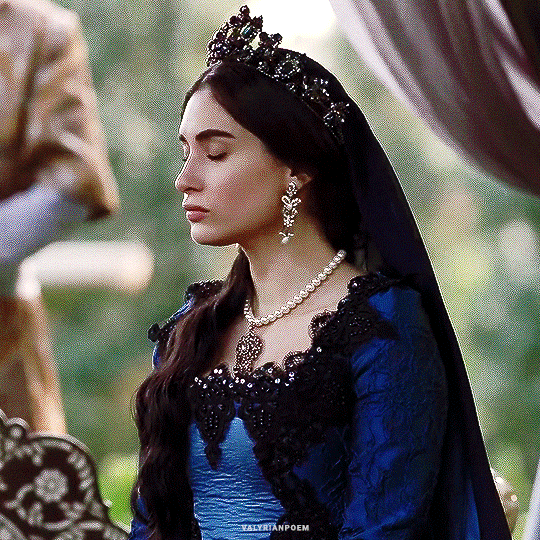
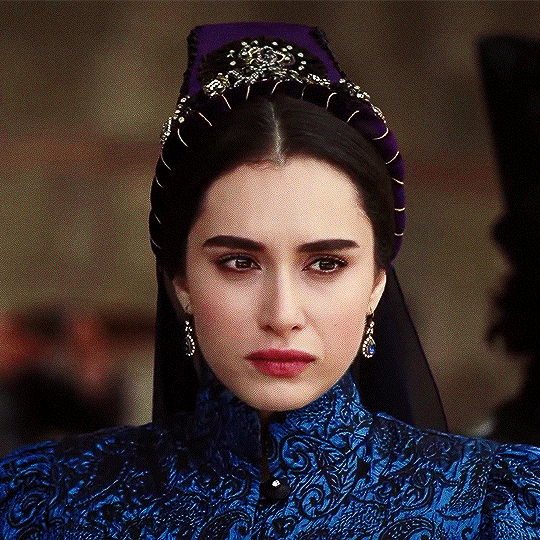
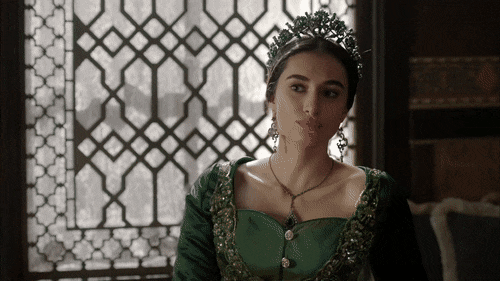
Literally the only Sultana that was smart enough to care about herself and her son first and not the sultans love.
#ibrahim couldnt handle her...i could.#magnificent century kosem#magnificent century#turhan sultan#valide sultan turhan
62 notes
·
View notes
Text
Master Post - Women
Themes
Costumes | Jewellery | Props
Valide Sultan
Hafsa Sultan
Halime Sultan
Handan Sultan
Kösem Sultan
Nurbanu Sultan
Safiye Sultan
Turhan Sultan
Haseki Sultan
Ayşe Sultan (Harem of Murad IV)
Dilaşub Sultan
Hümaşah Sultan (Harem of Ibrahim I)
Hürrem Sultan
Mahidevran Sultan
Muazzez Sultan
Sultanas by birth
Atike Sultan
Ayşe Sultan (Daughter of Kösem)
Ayşe Sultan (Daughter of Şehzade Bayezid)
Ayşe Hümaşah Sultan
Beyhan Sultan (Daughter of Hafsa)
Beyhan Sultan (Daughter of Turhan)
Bican Sultan
Dilruba Sultan
Esmahan Sultan
Fahriye Sultan
Fatma Sultan (Daughter of Hafsa)
Fatma Sultan (Daughter of Kösem)
Gevherhan Sultan (Daughter of Kösem)
Gevherhan Sultan (Daughter of Nurbanu)
Hanzade Sultan
Hatice Sultan (Daughter of Hafsa)
Hatice Sultan (Daughter of Şehzade Bayezid)
Hümaşah Sultan (Daughter of Safiye)
Huricihan Sultan
İsmihan Sultan
Kaya Sultan
Mihrimah Sultan (Daughter of Hürrem)
Mihrimah Sultan (Daughter of Şehzade Bayezid)
Nergisşah Sultan
Şah Sultan (Daughter of Hafsa)
Şah Sultan (Daughter of Nurbanu)
Concubine Sultanas
Defne Sultan
Farya Sultan/Farya Bethlen
Gülbahar Sultan
Mahfiruze Sultan
Meleksima Sultan
Mihrünnisa Sultan
Rana Sultan
Concubines & Harem Members
Afitap Hatun
Akile Hanim
Anna Hatun
Ayşe Hatun (Harem of Şehzade Mustafa)
Cihan Hatun
Dilşah Hatun
Efsun Hatun
Elanur Hatun
Elif Hatun (Harem of Şehzade Mustafa)
Fatma Hatun
Firdevs Hatun
Firuze Hatun
Gülfem Hatun
Gülnihal Hatun
Gülsen Hatun
Hanife Hatun
Hazal Hatun
Helena Hatun
Katerina Hatun
Mahfiruz Hatun
Nazenin Hatun
Neze Hatun
Nurbahar Hatun
Olga Hatun
Rümeysa Hatun
Sadıka Hatun
Sanavber Hatun
Şayeste Hatun
Yasemin Hatun
Zarife Hatun
Unnamed Harem Members
Servants
Afife Hatun
Canfeda Hatun
Cennet Hatun
Daye Hatun
Derya Hatun
Dudu Hatun
Elif Hatun (Servant of Gevherhan Sultan)
Emine Hatun
Esma Hatun
Eycan Hatun
Fahriye Kalfa
Fidan Kalfa
Gülbahar Kalfa
Gülperi Hatun
Gülşah Hatun
Gülşah Kalfa
Hatice Kalfa
Hircan Kalfa
Kumru Hatun
Lalezar Kalfa
Melek Hatun aka Madame Margaret (Servant of Farya Bethlen)
Melek Kalfa (Servant of Fatma Sultan)
Meleki Hatun
Menekşe Hatun
Nadia Hatun
Narin Kalfa
Nazlı Hatun
Nigar Kalfa
Nilüfer Hatun
Sedef Hatun
Ottoman Citizen
Armin Hatun
Cevher Hatun
Dilanur Hatun
Eleni Hatun
Esmanur Hatun
Ester Hatun
Foundation Ladies
Hanım Ağa
Kalika Hatun
Rakel Hatun
Sabiha Hatun
Zeynep Hatun
Unnamed Istanbul Citizens
Europeans
Anna Jagiellon
Carmina
Catherine of Brandenburg
Gabriella Sfenza De Feo
Gracia Mendes Nasi
Isabella Jagiellon
Princess Isabella Fortuna
Portia Gritti
Sara Hatun
Signora Benetto
Silvia Conterini
Unnamed European Characters
Other
Aybige Hatun
Eftelya Hatun
Rita Hatun
Saliha Hatun
#Muhteşem Yüzyıl#Muhteşem Yüzyıl: Kösem#Magnificent Century#Magnificent Century Kösem#Magnificent Century Kosem#Master Post
17 notes
·
View notes
Text
Simillarities between consorts Pt. 2:
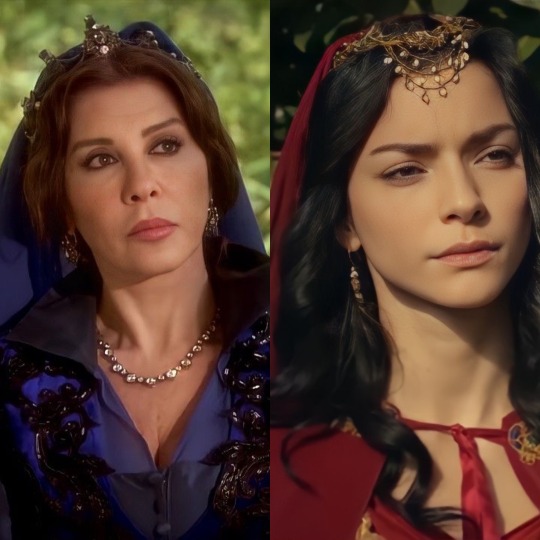
Ayşe Hafsa Sultan & Nurbanu Sultan
Both were consorts to sultans named Selim.
Both gave birth first to daughters.
Ayşe Hafsa was the first to hold the title of Valide Sultan, while Nurbanu was the first to hold it as an official, legally recognized position.
Both were known for their beauty.
Both were charitable and beloved by the people.

Handan Sultan & Saliha Dilaşub Sultan
Both were of Balkan Slavic origin (Handan was Bosnian, Dilaşub may have been Serbian ).
Both were the first concubines presented to the prince/sultan.
Both served only 2 years as Valide Sultan.
Both were favored by their mothers-in-law.
Both had sons named Süleyman (Handan’s son died in childhood)
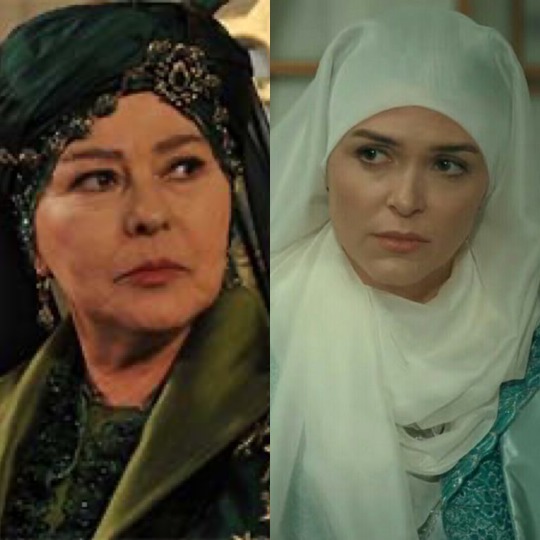
Servetseza Kadın & Rahime Perestu Kadın
Both were of Circassian origin.
Both were consorts of Sultan Abdülmecid I.
Both adopted children of other consorts who had passed away.
The sons they adopted later became sultans.
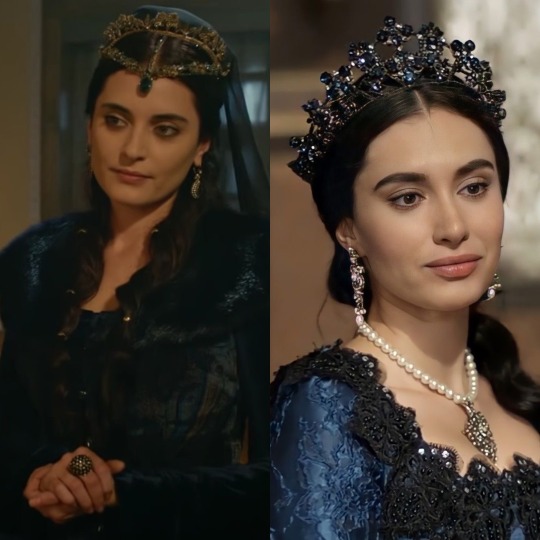
Turhan Sultan & Halime Sultan
Both fell out of Sultan's favor
Both had rivalries with their mothers-in-law.
Both served as regents during their sons’ reigns.
#ottoman empire#history#hatun#youtube#fyp#hasekisultan#istanbul#sultanmurad#sultan#consorts#turhan sultan#halime sultan#ayse hafsa sultan#nurbanu sultan#circassians#venetian#handan sultan#sultan süleyman#sultanabdulhamid#sultan ibrahim#sultanahmet#fypシ#turkish history#tumblr#similarities
9 notes
·
View notes
Text
ok i just learned that mck only gives turhan four episodes of screentime and that's... such a disappointment? this woman was the last prominent figure in the sultanate of women, the last great valide sultan, after whose death it was said that "everyone was sad and sorrowful and wailed, saying ‘alas, the strongest prop of the state is gone.’” and you introduce her in the very last stretch of your two+ hours per episode, sixty episode long show? why
#i'm still looking forward to seeing her on my first watch but. man. oof.#turhan sultan#muhteşem yüzyıl#muhtesem yuzyil#muhtesem yuzil kosem#magnificent century#magnificent century kosem#mc tag#i ramble
29 notes
·
View notes
Note
I wish to give an opinion of daughters of Ibrahim. There is a great abyys in lack of prooves to demarcate daughters of Ibrahim, Atike and Gevherhan. At times, I have an opinion that Atike existed, and at another times that she didn’t exist. For now, I favour the other theory, but i will talk one day about that topic more detailed.
Archiv für Kulturgeschichte Band 77 on page 65, that at the very end of reign of Sultan Ibrahim, Valide Sultan received 125 okka per month, daughters of Murad III named Hümaşah and Hatice received 7 okka per month, daughter of Murad III Fahri(han) received 10 okka per month, Kaya Sultan 16 okka per month, daughters of Ibrahim Gevherhan and Beyhan 30 okka per month and daughter of Ibrahim Fatma 50 okka per month.
Why would Gevherhan and Beyhan receive less stipend than Fatma, as Fatma was adopted and raised by Turhan? Btw, Fatma survived her husband, read Sakaoglu (actually, Ulucay proved it first). Also, in Acta et Diplomata Ragusina, Fatma is mentioned in 1658 document as widow of Fazli Pasha, nothing else is said unfortunately…
Anyway, I would claim that Ayşe Sultan binti Ibrahim really existed. See this quote from work The rise of the Köprülü family (p. 129):
For instance, when Prince Mustafa, the first son of Mehmed IV, was born in Edirne Palace in 1664, Ayşe Sultan, Gevherhan Sultan and Beyhan Sultan, sisters of Mehmed IV, were called to Edirne Palace from Topkapı to join in the celebration for the new prince. This summons shows that some members of the sultan’s family still resided in Topkapı Palace after 1663.
I consider her being the own sister of Mehmed IV. Kütükoğlu was only one right, he was married to Ibrahim’s Ayşe. Ahmed’s Ayşe really died in 1656, in document Vakfiler su defteri there is one document mentioning Ayşe Sultan died before 1660 (if I recall). Her last husband was Ibsir Mustafa Pasha. Sadly, Ibrahim’s Ayşe was wrongly confused also as Ibsir’s wife. Her one and only marriage was with Suleiman Pasha Malatuk (Ermeni). Alderson confused her with Murad IV’s daughter.
In work Atik şikâyet defteri (7 numaralı H.1081-1083/ M.1671-1672) transkripsiyon, Mehmed IV wrote several letters in 1671/72 to his sisters Ayşe and Gevherhan, and their husbands. He doesn’t refer them as hemşirem, but it’s them.
Anyway, in work OSMANLI DEVLETİ’NİN 1660-1661 (HİCRİ 1070-1071) TARİHLİ SEFER BÜTÇESİ (pp. 23-24), there were provided annual payments of some Ottoman princesses in 1661. This payment list does not refer to all of the Sultanas who were knowly alive in 1661, as Ahmed’s daughter Fatma Sultan for example. Only some of them.:
Hâshâ-i hazret-i Valide Sultan 12.000.000
Hâshâ-i paşmaklık-ı Ayşe Sultan 2.595.333
Hâshâ-i paşmaklık-ı Fatıma Sultan 2.005.000
Hâshâ-i paşmaklık-ı Rukiyye Sultan 1.235.000
Hâshâ-i paşmaklık-ı Safiye Sultan 1.005.000
Hâshâ-i paşmaklık-ı Beyhan Sultan 1.560.000 24
Hâshâ-i paşmaklık-ı Gevherhan Sultan 1.520.000
Hâshâ-i Ayşe sultan haseki-i merhum Gazi Sultan Murad Han aleyhi’r-rahmeti ve’l-gufran 100.000
Hâshâ-i paşmaklık-ı Ümmi Sultan 295.000
Hâshâ-i paşmaklık-ı Sâime Sultan 285.000
Hâshâ-i temlik-i merhum Kaya Sultan 1.250.000
See how Mehmed’s cousins (Murad IV’s daughters) and sisters (especially) received high payments, in difference to his aunt Ümmi Sultan and his great-great-aunt Saime Sultan. But, you would notice his sisters Ayşe and Fatma received the highest salaries; Ayşe the very highest as own sister, Fatma little lesser as adopted sister.
Sorry for the long wait, I have been incredibly busy these past few months.
About Ayşe binti Ibrahim, I would refer to this post, in which @rhaenahanzades found that the one married to Ermeni/Malatyalı Süleyman Pasha was Ayşe binti Ahmed I. I’ll paste the citation again, here:
“Soliman passa, Visir della Porta. Ritrouai anche alla Corte per Visir della Porta il Sr Soliman passa, stato un tempo Visir Supremo, dal quale fui all'udienza e lo presentai secondo le comissioni, il quale nell'honorarmi e trattarmi bene non uolse mostrarsi meno cortese degl'altri, offerendosi con molta humanità per ogni occorenza de publici seruitii. Questo Sr è assai noto all'EE. VV. per rellationi di diuersi loro ambassadori, onde a me non occorre tediarle in detto proposito. Dirò solo questo, che non le uol male e che sia personaggio da potterle fauorire, essendo ben uoluto da S. Mtà, col quale è ancor congiunto col uincolo di parentella, mentre la sua zia Aisce sultana tiene per moglie.” (“Dubrovačka akta i povelje” vol. 3, pages 661 and 662)
I believe Ayşe binti Ibrahim died pretty young and therefore never entered the Ragusian ambassadors’ lists of gifts.
As for Fatma binti Ibrahim, I must have missed when it was decided that she had been adopted by Turhan because I have never heard of this.
About the list of payments you’ve found, I’m not sure those princesses are identified correctly:

I have identified them based on seniority and the amount of money, which seems to me to be what their lands yield. I don’t think these are stipends.
Anyway, if we put the princesses in order of amount of money, I think it’d be easier to understand who is who:
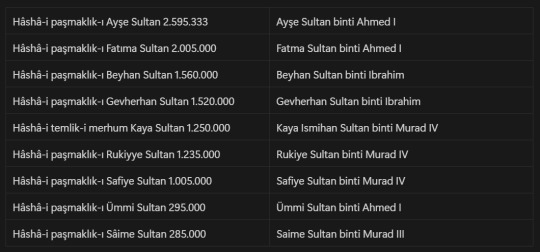
Ayşe and Fatma stand at the top of the hierarchy because a) they’re older and b) they must have amassed a great amount of land during their lives. After them we have the sisters of the reigning sultan (Mehmed IV), so Beyhan and Gevherhan (possibly in order of birth??); then we have Murad IV’s daughters (Kaya is mentioned as deceased because she was at the time), and lastly we have two minor princesses: Saime, a daughter of Murad III and a non-haseki concubine, and Ümmi, either a daughter of Ahmed I or of Murad III as well. I say this because I think their small amount of land means they were not daughters of Haseki Sultans: if Ümmi is Ayşe and Fatma’s sister that’s the only reason she would possess less land than them.
#ask post#ask: ottoman history#kehribar-sultan#ayse sultan daughter of ahmed i#fatma sultan daughter of ahmed i#rukiye sultan daughter of murad iv#safiye sultan daughter of murad iv#kaya ismihan sultan daughter of murad iv#beyhan sultan daughter of ibrahim i#gevherhan sultan daughter of ibrahim i#saime sultan daughter of murad iii#ummi sultan daughter of mehmed iv
13 notes
·
View notes
Note
hi! i see you call Beren!Kösem a mary sue, and while i do agree and have considered her one since my first watch of mc: k, i wonder why this seems to be an easy, and in fact very popular conclusion, while seldom the same is said about her predecessors and sucessor, who share traits she's criticized for. all are always victorious, have characters included in the show just to end up killed or exiled by them and sometimes are saved by conspicuous (and sometimes ridiculous) script-favor. mc and mc: k even close the show with the wins (if not perfect) of Nurbanu and Turhan, respectively. still, i've only seen Hürrem and Turhan being called mary sues once each (and in Hürrem's case it was by a hater). what makes them, at least Hürrem and Nurbanu, compelling as women in their way to power, unlike Kösem? thanks in advance.
A key difference is that Hürrem and Nurbanu struggle to their way to power, they suffer setbacks, humiliations and important losses and have to fight hard to earn their victory. Hürrem was the legal wife of the sultan and still suffering at the hand of Valide Hafsa, Kosem was 16 and kicking Safiye’s ass like it was nothing.
Winning is not an issue in itself, a first season about Kosem ending on her being regent, having successfully navigated through turbulent times, would always be a great victory, but it should feel like the culmination of a long, turbulent journey, whereas by the time Kosem ends up as regent in the finale, we’ve seen her win so much and with such ease that it feels like just another Tuesday.
I also never got the impression that Hurrem or Nurbanu were getting glazed to no end for simply existing. On the contrary, both are villainized by other characters throughout the show more than anything. Hurrem gets a lot of praise and love in her finale episode which feels very emotional because we’ve seen her being so hated throughout the show, while MCK expects us to take Kosem as a legendary figure basically from the moment the Beren Saat version is introduced.
Hurrem and Nurbanu do benefit from lucky circumstances that can appear as being a little bit too convenient at times (this is still a soap opera after all) but it doesn’t outweigh their struggle, while the plot contrivances and dumbing down of other characters (especially women) in MCK is something that hits you in the face every episode imo.
Finally, neither Hurrem nor Nurbanu warps the world around them the same way Kosem is. They don’t rewrite historical events to make them the main force behind them, and I don’t feel like other characters were sacrificed to elevate them. I’ve seen some people argue that Mahidevran was done dirty to prop up Hurrem, but I maintain that she’s a morally grey, well-written character who is offered a lot of sympathy by the narrative (ex : there’s a lot of focus on her grieving for Mustafa, while Mehmed’s death was largely ignored for example)
As for Turhan, I think it’s complicated to judge because she only 4 eps, and so there a definitely things that don’t make a lot of sense and are contrived, like how she's suddenly strong enough to defeat Kosem. However, I actually think that her character is a victim of the relics of the pro-Kosem bias. They purposefully made her very cold, arrogant and quite mean (while the real Turhan at least knew how to present herself as humble), and made her actions look worse (sending pirates after listen Osman, turning Kosem’s death into a massacre), so it doesn’t feel right to call her a Mary Sue.
6 notes
·
View notes
Text
10 most Influential women in the Ottoman Empire (plus five non- sultans)
I must say in advance, this is purely my opinion and it doesn't include legal power,but general influence. For example if one woman had more legal power but still was limited to some actions, that another woman could get away with, I will rank her higher. Let's start with non sultans.
Part I: Non-Sultans
Number 5: Çevri kalfa
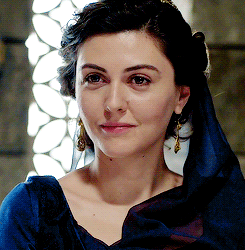
Çevri kalfa was a woman of Georgian origin and previously loyal servant to Nakşidili Sultan (also Georgian). She became mistress head treasurer( Baş hazindar usta) after accession of Mahmud II, who she saved from executioners by throwing them hot coals and sneaking the prince out. After becoming Head treasurer, she attained so much wealth that she could afford expensive clothes not even sultans wore. A girls school, built in her name, is one of the first schools for girls and the biggest primary school in Istanbul. She remained in her office until her death and was Sultan's trusted and favoured advisor.
Number 4: Meleki Kalfa

Meleki kalfa was a servant of Kösem and Ibrahim, however following the deposition of the sultan, she secretly switched sides as an agent of Turhan. Meleki played an important role in Turhan's rebellion by giving her information about Kösem's plan to dethrone Mehmed. After Kösem's death and Turhan's accession, she became an important person in Valide Sultan's court, was freed and married to Şaban Khalife. The couple built a residence in Istanbul, where Meleki not only conditioned her line of information to Turhan, but also acted as a negotiator in the palace on behalf of people. The political influence of her and her husband grew so much and they were murdered in 1656 for abuse of power.
Number 3: Gulfem Hatun

I have spoken about her in my previous posts
Number 2: Mahidevran Hatun
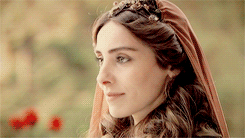
I have thought a lot about where to put her. People would expect her to be Number 1,mostly because they are used to her being sultan. That is what I first thought,for other reasons,but here we are. She has several significant influences that not many other women had:
1. She was popular with janissaries and people
2. Had a spy network, allowing her to hear major events happening in the capital.
3. She had strong allies. Ibrahim Paşa supported her and Mustafa later in his life, Hatice and her husband were supporting her openly or indirectly.
4. She was a considerable rival to the first and one of the most powerful women in the ottoman empire.
5. She had powerful characteristics: Was an intelligent, educated woman. Could mask her resentment towards Hürrem and act calmly around him.
6. She was a trusted advisor to her son. Actually, she supported the idea of Mustafa revolting against Suleiman,but only after she received information about his imminent execution, through her spy network.
Number 1: Çanfeda Kalfa

Çanfeda was the woman of Circassian origin, who served as second in command of Nurbanu for 18 years and the ruler of harem for another 11, so we can say she was de-facto Valide sultan.
In her almost three decades of service, she acquired wealth, so great that it attracted negative attention of Janissaries and even the grand Vizier. Although she collected such affluence through her salary(that was extraordinarily high consisting of 200 akches a day, it was the average salary of an imperial princess) and bribery, she used it for selfless purposes. She built three mosques, fountains, hamams, two schools, irrigation systems and fixed the roads, costing her several million akches, still she remained as one of the wealthiest people in the empire. In 1595, when Safiye exiled her, she needed dozens of carriages to carry her holdings, which apparently did not consist of much of the furniture, because she bought it from Venice the next year. It's also considerable that as an exiled person, she had to give up some of her wealth to imperial treasury.
Apart from her vital involvements in harem management in which she dominated Safiye, she had considerable influence over state matters as well. Çanfeda used her connections to install her not so bright brothers as paşas and after the series of mistakes,they were imprisoned, Çanfeda not only defied Grand viziers orders and had them set free,but restored them to their offices as well. Her power, wealth and influence came to the attention of Janissaries, who demanded her dead, but she got away with this as well. Another indication of her power, was her attempt to free the second son of sultan Murad. Even though she was caught red handed, the power it would take to infiltrate the prison is still considerable.
P.S. I did not list Halime and Handan,because after becoming Valide Sultans and regents they reached a whole different level, leagues above almost every single woman in ottoman history, however their power and influence was immense even when they were Hatuns.
As there is only 10 images/Gif limit. I will speak about 10 most powerful women in second posts.
#history#historical drama#16th century#magnificent century#magnificent century kosem#mc: kosem#medieval women#ottoman empire#ottomanladies#historical events#canfeda hatun#gulfem hatun#mahidevran hatun#mahidevran sultan#ottoman sultanas#ottoman history#ottoman#women in politics#sultanate of women#women in history#historical figures#historical#historyedit
94 notes
·
View notes
Note
As you know, in 1655, fourteen sultanas received gifts from Ragusian envoys:
1. Fatma sultana moglie di Fasli passa
2. Ghiusciahato sultana moglie di Chienan passa
3. Behar sultana moglie di passa di Cairo
4. Caia sultana moglie di Melek passa
5. Ruckie sultana moglie di Telak Mustafa passa
6. Fatisce sultana moglie di Haidar passa
7. Aisce sultana stata moglie di Gascir passa
8. Fatma sultana moglie di Jusuf passa
9. Vsci sultana moglie di Ahmet passa
10. Faslite sultana moglie di Lauer passa
11. Fatige sultana moglie di Jusuf basci
12. Inasce sultana moglie di Hassan passa
13. Hatige sultana moglie di Jusuf Gesali
14. Safie sultana moglie di Haidar Sade, figlia di sultan Murat
______________
1. Fatma Sultan binti Ibrahim, wife of Fasli pasha
2. Gevherhan Sultan binti Ibrahim, wife of Sari Kenan Pasha
3. Beyhan Sultan binti İbrahim, wife of Haseki Mehmed Pasha
4. Kaya Sultan binti Murad IV, wife of Melek Ahmed Pasha
5. Rukiye Sultan binti Murad IV wife of Tellak Mustafa Pasha
6. ???
7. Ayşe Sultan binti Ahmed I, wife of Ibşir Pasha
8. Fatma Sultan binti Ahmed I, wife of Koca Yusuf Pasha
9. Ümmügülsüm Sultan binti Ahmed I, wife of Ahmed Pasha
10. Fahrihan Sultan binti Murad III, wife of Dilaver Pasha
11. Atike Sultan binti Ahmed I, wife of Doğancı Yusuf pasha
12. Hümaşah Sultan binti Murad III, wife of Nakkaş Hasan Pasha
13. Hatice Sultan binti Murad III(?), wife of Jusuf pasha
14. Safiye Sultan binti Murad IV, wife of Haydarzade Mehmed Pasha
I have problem to identify certain Fatisce sultana, wife of certain Haydar Pasha. It could be misspelled by Ayşe, Atike, even Hatice. And I don't know whose daughter it could be. Maybe Turhan's daughter, Atike Ayşe Sultan? I don't know...
I wanted to ask you what do you think of this, who the sultana and the pasha are, because I am not sure.
Hi! Well, I'm sorry that I can't be of much help with this. I also have no idea who this princess could be, though I've been curious about her too. From what I searched about it before, there was apparently not an influential Haydar Pasha in that period (by influential I mean a vizier or admiral), which makes me think this princess might've not been exactly Turhan's daughter, maybe just one of Ibrahim's with a random woman. But as we know, there were cases were less influential matches for daughters of Hasekis and/or Valides were made depending on the situation (aka Hanzade with Bayram Pasha, which was a very specific situation). Unfortunately, we know nothing about this Haydar Pasha to make much with it and much less of what might've been his role in politics of that time.
3 notes
·
View notes
Text
36 OSMANLI PADİŞAHININ TÜRBELERİ NEREDE? BUYRUN ÖĞRENELİM..
1. Osman Gazi (I. Osman):Bursa’da Tophane semtinde kendi adını taşıyan türbesinde yatıyor...
2- Orhan Gazi:Aynı yerde, babasının yanıbaşında kendine ait türbesinde ebediyeti uyuyor...
3- Sultan I.Murad (Hüdavendigar): Bursa, Çekirge’de kendine ait üstü açık türbesinde kıyameti bekliyor…
4- Sultan I. Bayezid (Y��ldırım)): Bursa’da Bayezid Hân Türbesi’nde yatıyor...
5- Sultan I. Mehmed (Çelebi):Bursa Yeşil Türbe’de yatıyor...
6- Sultan II. Murad:Bursa,Muradiye semtinde yatıyor...
7- Sultan II.Mehmed (Fatih):Fatih’te, Fatih Camii bahçesindeki türbesinde yatıyor...
8- Sultan II.Bayezid (Veli):Bayezıtta Bayezid Camii bahçesindeki türbesinde yatıyor...
9- Sultan I.Selim (Yavuz):Yavuz Selim Camii bahçesindeki türbesinde yatıyor...
10- Sultan I.Süleyman (Kanuni): Süleymaniye Camii bahçesindeki türbesinde yatıyor...
11- II. Selim: Ayasofya Camii ön bahçesindeki türbesinde.
12- Sultan III.Murad: Ayasofya Camii ön bahçesindeki türbesinde yatıyor…
13- Sultan III.Mehmed:Ayasofya Camii bahçesindeki türbesinde yatıyor...
14- Sultan I.Ahmed:Sultanahmet Camii yanındaki türbesinde yatıyor...
15- Sultan I. Mustafa:Ayasofya Camii önündeki türbesinde yatıyor...
16- II. Osman (Genç): Sultanahmet Camii yanındaki türbesinde yatıyor…
17- Sultan IV. Murad:Sultanahmet Camii yanındaki türbesinde yatıyor…
18- Sultan İbrâhim :Ayasofya Camii bitişiğindeki türbesinde yatıyor…
19- Sultan IV.Mehmed (Avcı):Yeni Camii arkasında Turhan Valide Sultân Türbesinde yatıyor…
20- Sultan II.Süleyman:Süleymaniye Camii bahçesindeki Kanunî Türbesi’nde yatıyor…
21- Sultan II.Ahmed:Süleymaniye Camii bahçesindeki Kanuni Türbesi’nde yatıyor…
22- Sultan II. Mustafa: Yeni Camii arkasındaki Turhan Valide Sultan Türbesi’nde yatıyor…
23- Sultan III.Ahmed: Yeni Camii arkasındaki Turhan Valide Sultan Türbesi’nde yatıyor…
24- Sultan I. Mahmud:Yeni Camii arkasındaki Turhan Valide Sultan Türbesi’nde yatıyor…
25- Sultan III.Osman:Yeni Camii arkasındaki Turhan Valide Sultan Türbesi’nde yatıyor…
26- Sultan III. Mustafa: Lâleli Camii önündeki türbesinde yatıyor…
27- I. Abdülhamid:Bahçekapı’da Hamidiye Türbesi’nde yatıyor…
28- Sultan III. Selim: Lâleli Camii önündeki türbesinde yatıyor…
29- Sultan IV.Mustafa:Bahçekapı’da Hamidiye Türbesi’nde yatıyor…
30- Sultan II.Mahmud:Çemberlitaş’taki kendi türbesinde yatıyor…
31- Sultan I.Abdülmecid: Yavuz Selim Camii bahçesindeki türbesinde yatıyor…
32- Sultan I.Abdülaziz: Çemberllitaş’taki Sultan II.Mahmud Türbesi’nde yatıyor…
33- Sultan V. Murad: Yeni Camii arkasındaki Turhan Valide Sultan Türbesi’nde.
34- Sultan II. Abdülhamid Han: Çemberlitaş’ta Sultan II. Mahmud Türbesi’nde yatıyor…
35- Sultan Mehmed Reşad: Eyüp’te Sultan Reşad Türbesi’nde yatıyor…
36- Sultan Vahideddin: Şam’da Sultan Selim
Camii kabristanında yatıyor…
Alemleri yaratan ve yöneten Hz. Allah hepsine gani gani rahmet eylesin.
4 notes
·
View notes
Text
osmanlı padişahlarının anneleri, genellikle “valide sultan” unvanı taşıyan önemli figürlerdi. hem saray içerisindeki hem de devlet yönetimindeki etkileri büyüktü. işte osmanlı padişahlarının anneleri:
erken dönem (1299–1453)
1. osman gazi: hayme ana (osmanlı'nın kurucusunun annesi).
2. orhan gazi: malhun hatun veya nilüfer hatun (bu konuda bazı tartışmalar vardır).
3. i. murad: nilüfer hatun.
4. yıldırım bayezid: gülçiçek hatun.
5. i. mehmed (çelebi): devlet hatun.
6. ii. murad: emine hatun.
7. fatih sultan mehmed: hüma hatun.
klasik dönem (1453–1603)
8. ii. bayezid: gülbahar hatun.
9. yavuz sultan selim: gülbahar hatun (amasyalı).
10. kanuni sultan süleyman: hafsa sultan.
11. ii. selim: hürrem sultan.
12. iii. murad: nurbanu sultan.
13. iii. mehmed: safiye sultan.
14. i. ahmed: handan sultan.
15. i. mustafa: halime sultan.
16. ii. osman (genç osman): mahfiruz hatun.
17. iv. murad: kösem sultan.
18. i. ibrahim: kösem sultan.
geç dönem (1603–1922)
19. iv. mehmed (avcı mehmed): turhan sultan.
20. ii. süleyman: saliha dilaşub sultan.
21. ii. ahmed: hatice muazzez sultan.
22. ii. mustafa: emetullah rabia gülnuş sultan.
23. iii. ahmed: emetullah rabia gülnuş sultan.
24. i. mahmud: saliha sultan.
25. iii. osman: şehsuvar sultan.
26. iii. mustafa: mihrişah sultan.
27. i. abdülhamid: rabia şermi sultan.
28. iii. selim: mihrişah sultan.
29. iv. mustafa: ayşe sineperver sultan.
30. ii. mahmud: nakşidil sultan.
31. abdülmecid: bezmialem sultan.
32. abdülaziz: pertevniyal sultan.
33. v. murad: şevkefza sultan.
34. ii. abdülhamid: tirimüjgan sultan.
35. mehmed reşad (v.): gülcemal kadın.
36. mehmed vahdettin (vi.): gülüstü hanım.
notlar
• osmanlı annelerinin çoğu, özellikle son dönemlerde, köken itibarıyla yabancıydı ve genellikle cariye olarak saraya girmişlerdi.
• osmanlı sarayında “valide sultan”lık, padişahın annesi için güçlü bir konum sağlardı; bu nedenle devlet yönetiminde ve saray hayatında önemli roller üstlenmişlerdir.
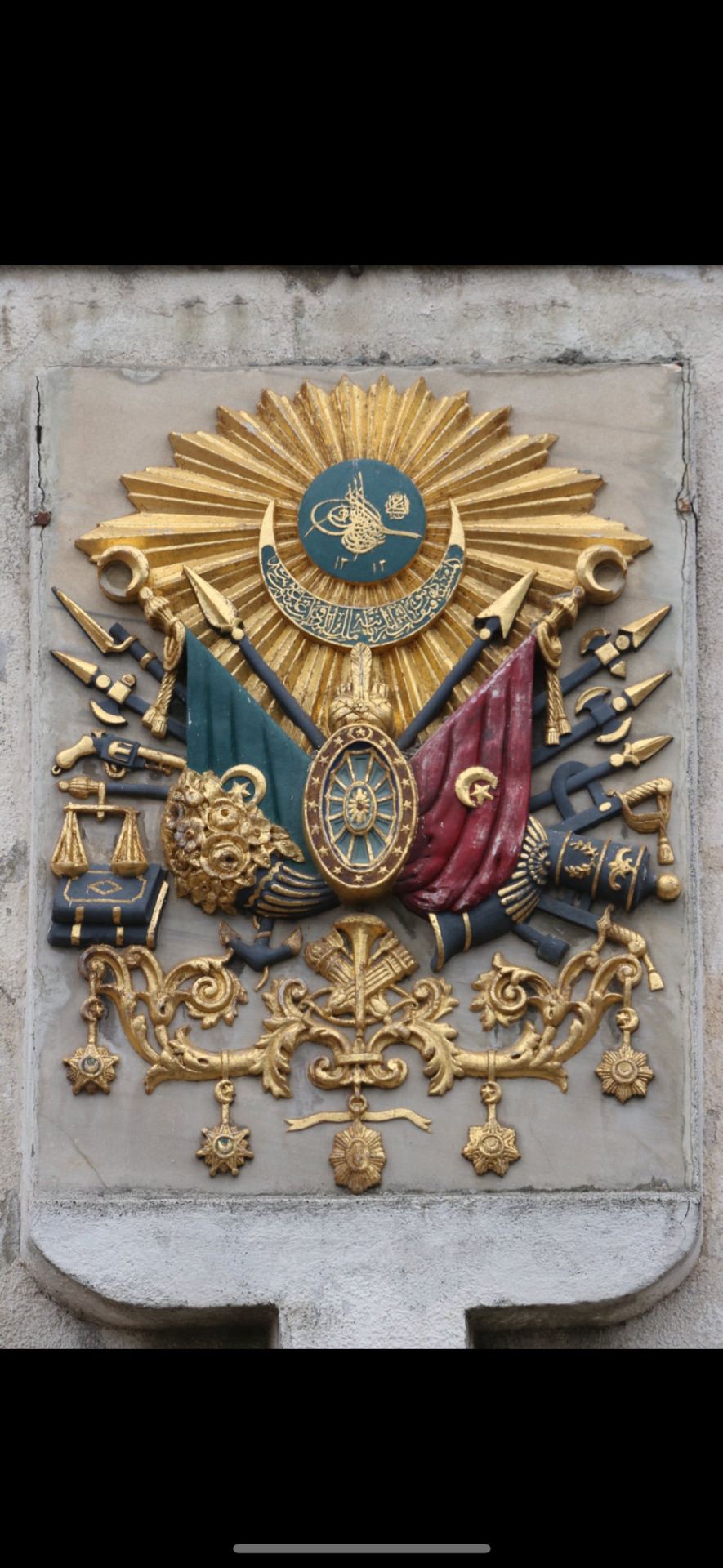
0 notes
Text
TURHAN SULTAN // HASEKI SULTAN
“She was the first Haseki Sultan of the Ottoman Sultan Ibrahim (reign 1640–48) and Valide sultan as the mother of Mehmed IV (reign 1648–87). Turhan was prominent for the regency of her young son and her building patronage. She and Kösem Sultan are the only two women in Ottoman history to be regarded as official regents and had supreme control over the Ottoman Empire. As a result, Turhan became one of the prominent figures during the era known as Sultanate of Women.”
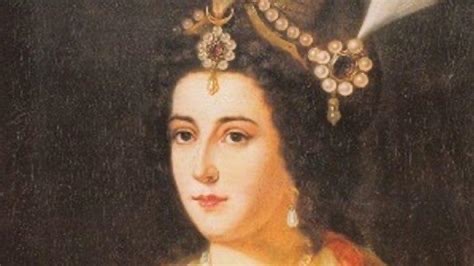
1 note
·
View note
Photo
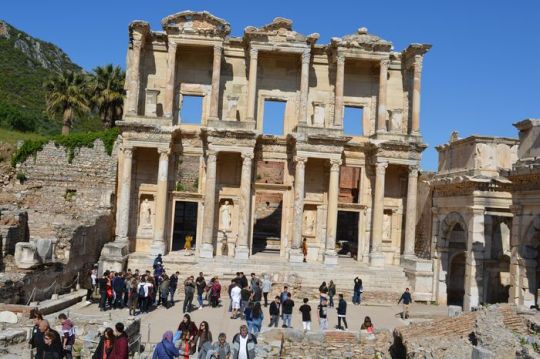
Royal Gifts and Exchanges
Turhan Valide Sultan, the mother of Sultan Mehmet IV, presented her son with a valuable golden dagger adorned with a single emerald at the inauguration of a new structure she had commissioned. This gesture of gratitude was among the most significant gifts exchanged within the royal family. Additionally, Sultan Mehmet IV followed the tradition of gifting valuable items to commanders, provincial governors, state officials, and foreign envoys, which were considered significant expenses for the treasury.
Diplomatic Gifts and Campaign Rewards
During campaigns, gifts were sent to allies such as the Khan of Crimea and distributed among members of the Imperial Army, including the commander-in-chief and officers of various ranks. After the conquest of the Candia fortress, the Sultan rewarded the Grand Vizier and Commander-in-Chief Serdar-i Ekrem with luxurious robes, adorned maces, and jeweled daggers, continuing the tradition of rewarding military successes with valuable items Private Istanbul Tours.
Continuous Flow in the Treasury
The exchange of gifts between the Ottoman Empire and its allies, as well as the rewards bestowed by the Sultan, ensured a continuous flow of valuable items in and out of the treasury. Records meticulously documented these transactions, often providing explanations or annotations for the items exchanged or received. Notably, significant goods such as the “Kaşıkçı Elması,” the largest diamond in Ottoman regalia, entered the treasury through unique circumstances, such as being found by a poor woman and later sold to a spoon-maker.
Unique Treasury Acquisitions
Aside from diplomatic exchanges and campaign rewards, the treasury also acquired valuable items through purchases. One notable example is the “Kaşıkçı Elması,” which has a fascinating origin story—it was discovered near the Tekfur Palace in Istanbul’s Ayvansaray district and eventually became one of the prized possessions of the Ottoman Empire.
1 note
·
View note
Photo
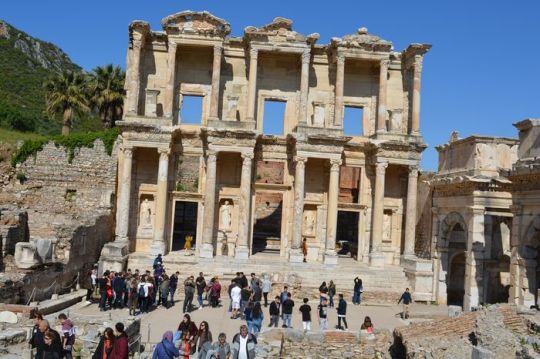
Royal Gifts and Exchanges
Turhan Valide Sultan, the mother of Sultan Mehmet IV, presented her son with a valuable golden dagger adorned with a single emerald at the inauguration of a new structure she had commissioned. This gesture of gratitude was among the most significant gifts exchanged within the royal family. Additionally, Sultan Mehmet IV followed the tradition of gifting valuable items to commanders, provincial governors, state officials, and foreign envoys, which were considered significant expenses for the treasury.
Diplomatic Gifts and Campaign Rewards
During campaigns, gifts were sent to allies such as the Khan of Crimea and distributed among members of the Imperial Army, including the commander-in-chief and officers of various ranks. After the conquest of the Candia fortress, the Sultan rewarded the Grand Vizier and Commander-in-Chief Serdar-i Ekrem with luxurious robes, adorned maces, and jeweled daggers, continuing the tradition of rewarding military successes with valuable items Private Istanbul Tours.
Continuous Flow in the Treasury
The exchange of gifts between the Ottoman Empire and its allies, as well as the rewards bestowed by the Sultan, ensured a continuous flow of valuable items in and out of the treasury. Records meticulously documented these transactions, often providing explanations or annotations for the items exchanged or received. Notably, significant goods such as the “Kaşıkçı Elması,” the largest diamond in Ottoman regalia, entered the treasury through unique circumstances, such as being found by a poor woman and later sold to a spoon-maker.
Unique Treasury Acquisitions
Aside from diplomatic exchanges and campaign rewards, the treasury also acquired valuable items through purchases. One notable example is the “Kaşıkçı Elması,” which has a fascinating origin story—it was discovered near the Tekfur Palace in Istanbul’s Ayvansaray district and eventually became one of the prized possessions of the Ottoman Empire.
0 notes
Text
oh holy shit just found this edit but holliday grainger playing lucrezia in the borgias is an insanely good turhan fancast??? one thing about the historical turhan is that she was overlooked because of her youth and inexperience (she was give her take in her early twenties when mehmed iv ascended), and her newfound position as valide sultan was something of an anomaly due to her not yet being in her post-reproductive stage, which prior valide sultans had reached. holliday grainger's portrayal of lucrezia definitely fits that sort of youthful, silk-hiding-steel vibe very well
#the video also shows!!! kosem and young turhan!!! i love it sm#i'm so frustrated with mck's turhan storyline time for me to start daydreaming about what could have been lol#^average experience in the mc/mck fandom#turhan sultan#muhteşem yüzyıl#muhtesem yuzyil#muhtesem yuzil kosem#magnificent century#magnificent century kosem#mc tag
2 notes
·
View notes
Note
How much influence was Turhan Hatice Sultan able to retain after her regency had ended? Are there any recorded moments of her using said influence post-regency?
I'd say this:
When the Marquis de Nointel, ambassador of Louis XIV, arrived by ship in Istanbul in 1670, he did not make the customary artillery salute when passing by the imperial palace, both because he wished to assert the superiority of the French monarchy to the Ottoman sultanate and because the sultan, Mehmed IV, was absent in Edirne. The city was scandalized and the ambassadorial community furious at the French for jeopardizing its collective standing. The diplomatic crisis was resolved when Turhan Sultan appeared one day with her retinue on the shore of the palace grounds in order to inspect a ship under construction and demanded that the French perform the royal salute in her name. The French ships were immediately decked out with multicolored banners, and their artillery began to fire, vying with the palace cannon, which were also fired in the valide sultan's honor. Soon, however, the volume and duration of the French detonations began to annoy the population of the city, and the Ottoman admiral sent word that pregnant women were miscarrying because of the disturbance.
She still represented the sultan even though she was not the regent anymore.
13 notes
·
View notes
Note
worst scenes quality-wise in MC and MC: K (either/both about writing and about acting) 😈.
I've already answered for scenes that are both badly acted and badly written in MC so I will focus on scenes/plots of poor quality in terms of writing, regardless of the quality of the acting.
The list isn't complete, not in order, and mostly on the top of my head:
Anything related: Isabella, Valeria, the secret weddings of the princes Finding Firuze's tattoo. Either Suleiman somehow never saw her back (what kind of boring sex were they having?), or Rustem somehow knows more about his archenemy than he does. Nurbanu coming to take Mehmet. I know the show was never accurate in terms of how much freedom of movement the concubines had but this one was just too dumb and nonsensical Nigar's death scene and its framing as being somehow deserved Murad and Mihrimah scenes in ep139. Why is he dumber and more naive as an adult than he was as a teenager? Hurrem killing Rana without a care in the world and also while it makes sense that she scapegoats Nurbanu, her again having no feelings about leaving her grandkids orphans was odd, did they forget how much she cared about her family? Cihangir's death scene being out of heartbreak because of Mustafa's death (give me a break). I have a headcanon that makes it more tolerable but still. Plus it dragged for way too long and it cemented his indifference towards his mother which is also bad writing and I hate it Bayezid going to Manisa with a group of soldiers in full armor yet Suleiman not hearing about it (I know it's a large empire, but this is such a big thing that it doesn't make sense to) Rustem's video game death scene Mahidevran trying to kill an unborn dynasty child and putting Suleiman's life in danger and yet Valide is more disturbed about Suleiman calling Hurrem his "sultan" Selim saying that Nurbanu must have provoked Huricihan (yes it's not objective but I hate this scene, there are other toxic scenes of them that I get, but this one never) (And this is getting too long)
MCK (again not complete, not in order and focusing mainly on quality): Kosem stopping the rebellion and becoming briefly immortal Fahriye writing a confession letter for no reason Safiye kidnapping Mehmet and then standing menacingly on a balcony Kosem being somehow able to decide who gets to be sultan and making the dumbest decision possible The statesmen being all angry that Halime locked up Ahmet's boys when they didn't give a shit when it was Mustafa Kosem holding divan without the sultan Farya's baby. She was a free woman and not Murad's wife at the time, her being pregnant should be a massive deal yet they never discuss it Gulbahar's army of fanatic teenage ninjas (it was hilarious and iconic but I have to admit it was also extremely stupid and nonsensical) Murad telling Farya he would take her by force if necessary, her telling it to her mother and her mother being like "but you loved that didn't you" and Farya smiling (barf) Murad and Farya at all times really Murad conquering an entire castle by himself Kosem building an entire underground secret tunnel but Murad or his spies somehow never noticing Turhan's seven good men somehow defeating Kosem's entire battalion of janissaries (They are many more but this a good sample)
6 notes
·
View notes